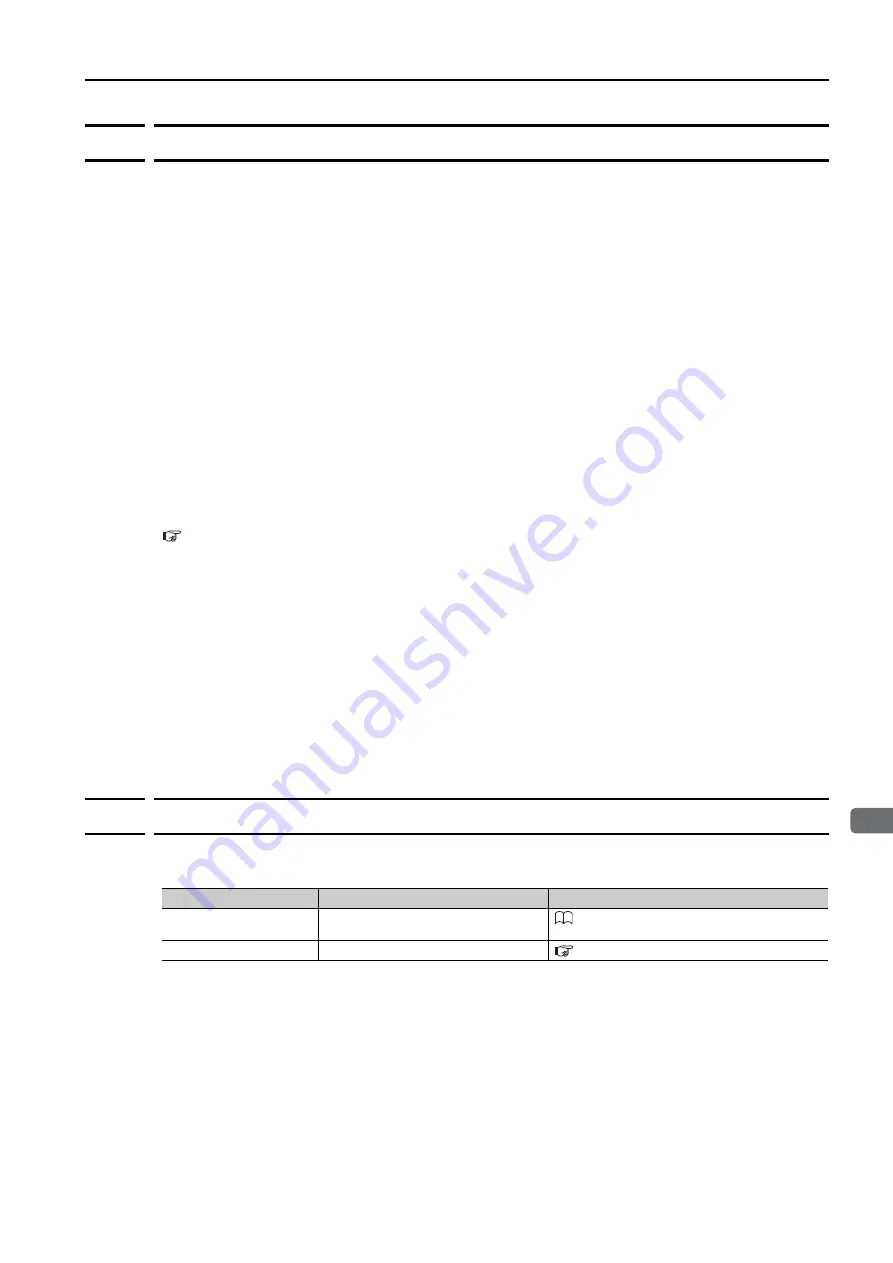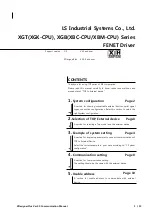
8.7 Autotuning with a Host Reference
8.7.2 Restrictions
8-35
8
T
uning
8.7.2
Restrictions
Systems for Which Adjustments Cannot Be Made
Accurately
Adjustments will not be made correctly for autotuning with a host reference in the following
cases. Use custom tuning.
•
When the travel distance for the reference from the host controller is equal to or lower than
the setting of the positioning completed width (Pn522)
•
Rotary Servomotors: When the movement speed for the reference from the host controller is
equal to or lower than the setting of the rotation detection level (Pn502)
•
Linear Servomotors: When the movement speed for the reference from the host controller is
equal to or lower than the setting of the zero speed level (Pn581)
•
When the time required to stop is 10 ms or less
•
When the rigidity of the machine is low and vibration occurs when positioning is performed
•
When the position integration function is used
•
When proportional control is used
•
When mode switching is used
•
When the positioning completed width (Pn522) is too narrow
Refer to the following sections for details on custom tuning.
Preparations
Check the following settings before you execute autotuning with a host reference.
•
The servo must be in ready status.
•
There must be no overtravel.
•
The servo must be OFF.
•
Position control must be selected if power is supplied to the motor (i.e., when the servo is ON).
•
The first gains must be selected.
•
The test without a motor function must be disabled (Pn00C = n.
0).
•
There must be no warnings.
•
The tuning-less function must be disabled (Pn170 = n.
0).
•
The parameters must not be write prohibited.
8.7.3
Applicable Tools
The following table lists the tools that you can use to perform autotuning with a host reference
and the applicable tool functions.
Tool
Function
Operating Procedure Reference
Digital Operator
Fn202
Σ
-7-Series Digital Operator Operating Man-
ual (Manual No.: SIEP S800001 33)
S
Tuning - Tuning
















































